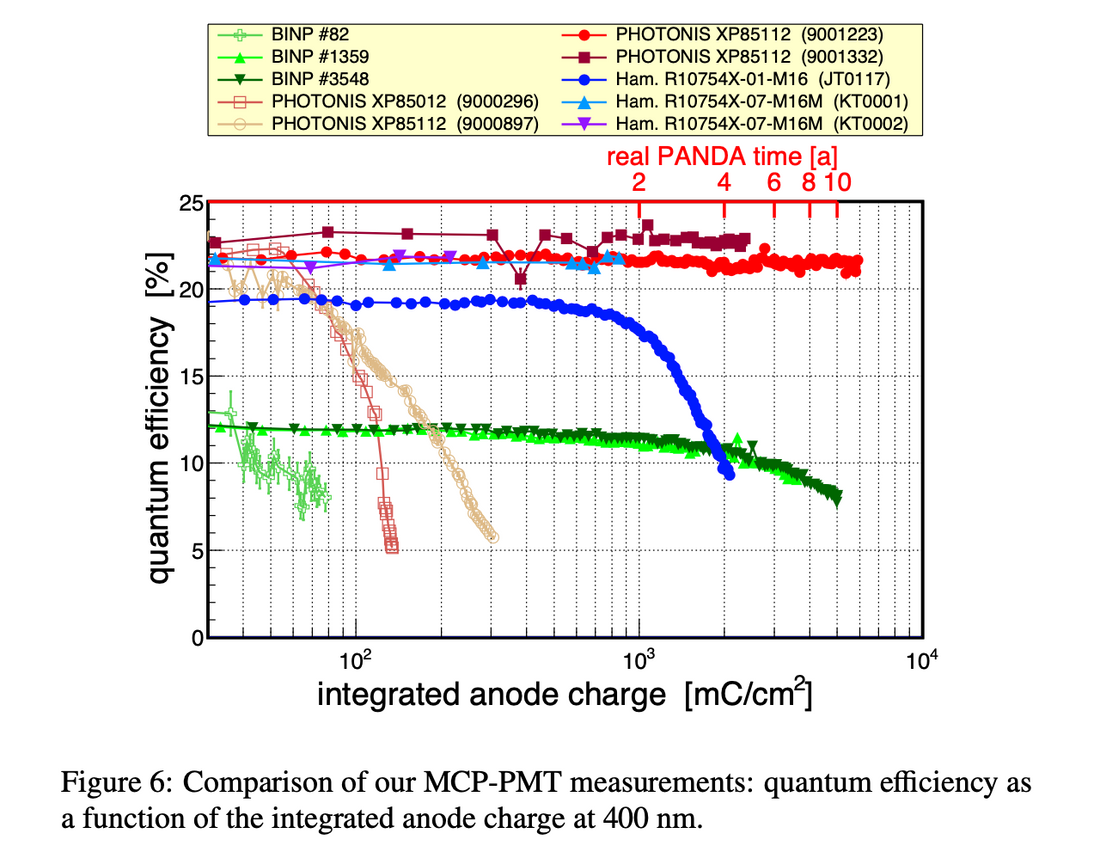
Improved lifetime of microchannel-plate PMTs
Citation
Lehmannc, A., Brittingc, A., Eyrichc, W., Uhligc, F., Dzyhgadloa, R., Gerhardta, A., ..., & Dodokhovb, V. Kh. (2014). Improved lifetime of microchannel-plate PMTs. Nuclear Instruments and Methods in Physics Research Section A: Accelerators, Spectrometers, Detectors and Associated Equipment, 787, 1-7.
Keywords
- PANDA experiment
- Microchannel plate photomultipliers (MCP-PMTs)
- Lifetime
- ALD coating
- Quantum efficiency (QE)
- Aging
- DIRC detectors
- Single photons
- Charged particle identification
Brief
Manufacturers have drastically improved the lifetime of microchannel-plate photomultiplier tubes (MCP-PMTs), which are favored for use in the PANDA detector at FAIR, by employing techniques such as atomic layer deposition (ALD) coating of MCP surfaces, a modified PC that is baked in a vapor of cesium and antimony, and the addition of a thin protective layer of aluminum between MCPs.
Summary
The authors tested the lifetime of micro-channel plate photomultipliers (MCP-PMTs) from different manufacturers by measuring the gain, dark count rate and quantum efficiency (QE) as a function of the integrated anode charge. The PANDA experiment at the FAIR accelerator will utilize MCP-PMTs as photon sensors for charged particle identification. MCP-PMTs experienced an unacceptable QE reduction after accumulating a relatively small integrated anode charge, rendering them unusable. The study examined various techniques used by manufacturers to improve the lifetime of these devices, including baking to remove rest gas, electron scrubbing, and application of a thin layer of secondary electron emissive material through atomic layer deposition (ALD). The authors found that MCP-PMTs with ALD coatings showed significantly improved lifetimes, exceeding the requirements for the PANDA experiment. For example, one ALD-coated tube was still operational after being exposed to 5.9 C/cm2, equivalent to more than ten years of operation at the highest expected luminosity.
